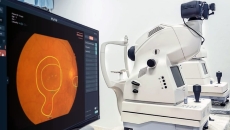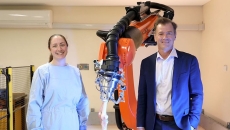Quality Care
During a discussion hosted by Frost & Sullivan, panelists examined how healthcare organizations should use digital tools to ensure care is easy to access.
Also, Point Robotics from Taiwan has received a US FDA 510(k) clearance for its surgical robot system.
Also, a new research centre at the University of Melbourne will use AI to advance breast cancer screening.
A J.D. Power study indicates telehealth is the preferred method among consumers for receiving certain types of medical care.
The company’s Seer Home device allows for potential epilepsy diagnosis through at-home data collection.
The JMIR study found themes like cost, functionality, progress tracking and educational content were important to consumers.
The technology uses heart rate variability measurements to assess the severity of sepsis in ED patients.
It will be used to test implants for hip and knee replacements.
A recent study found patients using virtual reality while undergoing hand surgery required less anesthesia during surgery.
Smart stethoscope company Eko received a $2.7 million grant from the National Institutes of Health, and Halo raised $2.6 million for its research and development collaboration tool.









